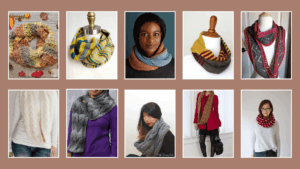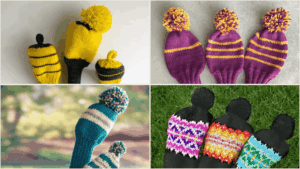Introducing Arm Knitting & Finger Knitting [Plus 6 Free Patterns!]
Learn to knit without needles!
Learn to knit without needles!
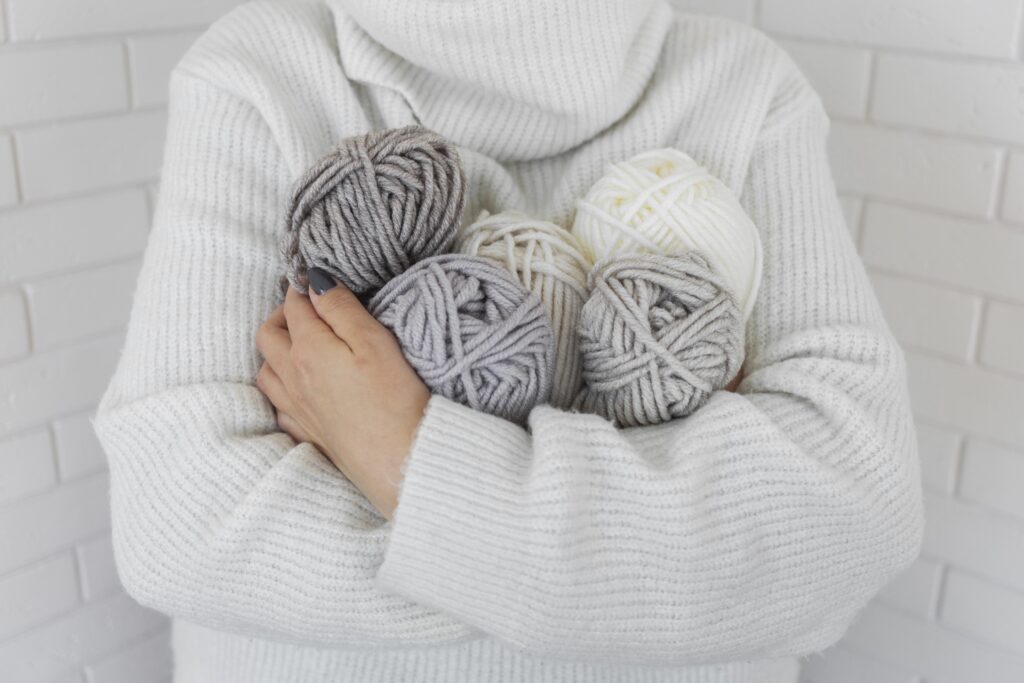
Today, we’ll be dipping our needles—er limbs— into the chunky yarn ball of the knitting world.
When we think of knitting, we often picture two sets of needles stitching away to magically to create a cozy sweater, or a sweet baby blanket. But did you know that there are more ways to knit? Today we’re going to introduce you to the magical world of arm knitting and finger knitting!
Disclaimer: This article contains links to external unaffiliated websites.
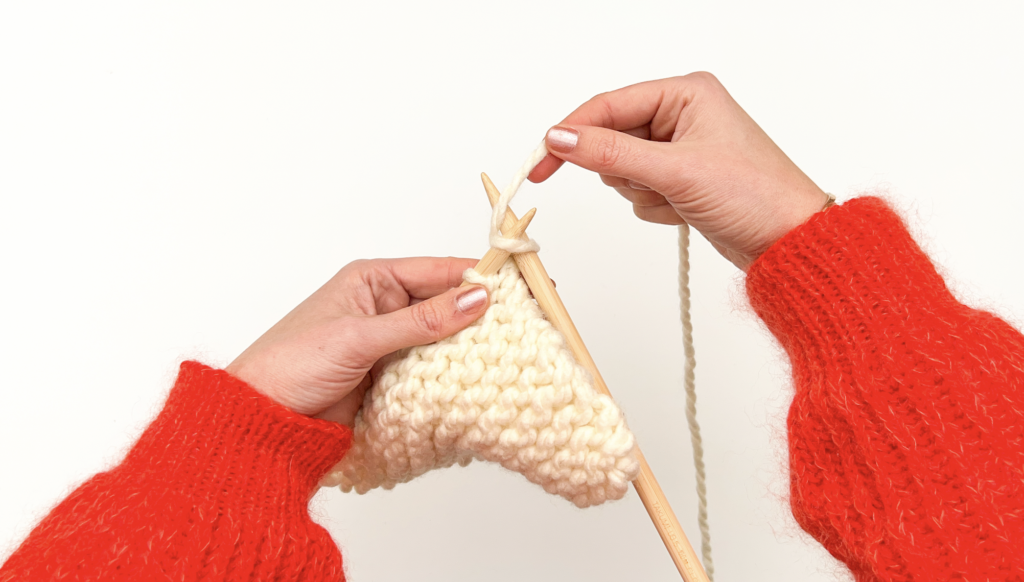
Their most traditional way to knit is done using two knitting needles to create fabric. This method is great because it makes it easy to use a range of yarns to create everything from super thin and airy fabric to thick and cozy knits. Plus you can put things down easily!
However, there are a few reasons a knitter might want to switch things up and try a a needle-free knitting experience. Arm knitting and finger knitting are both fast and easy ways to knit using yarn without the needles!
Curious? Let’s get started!
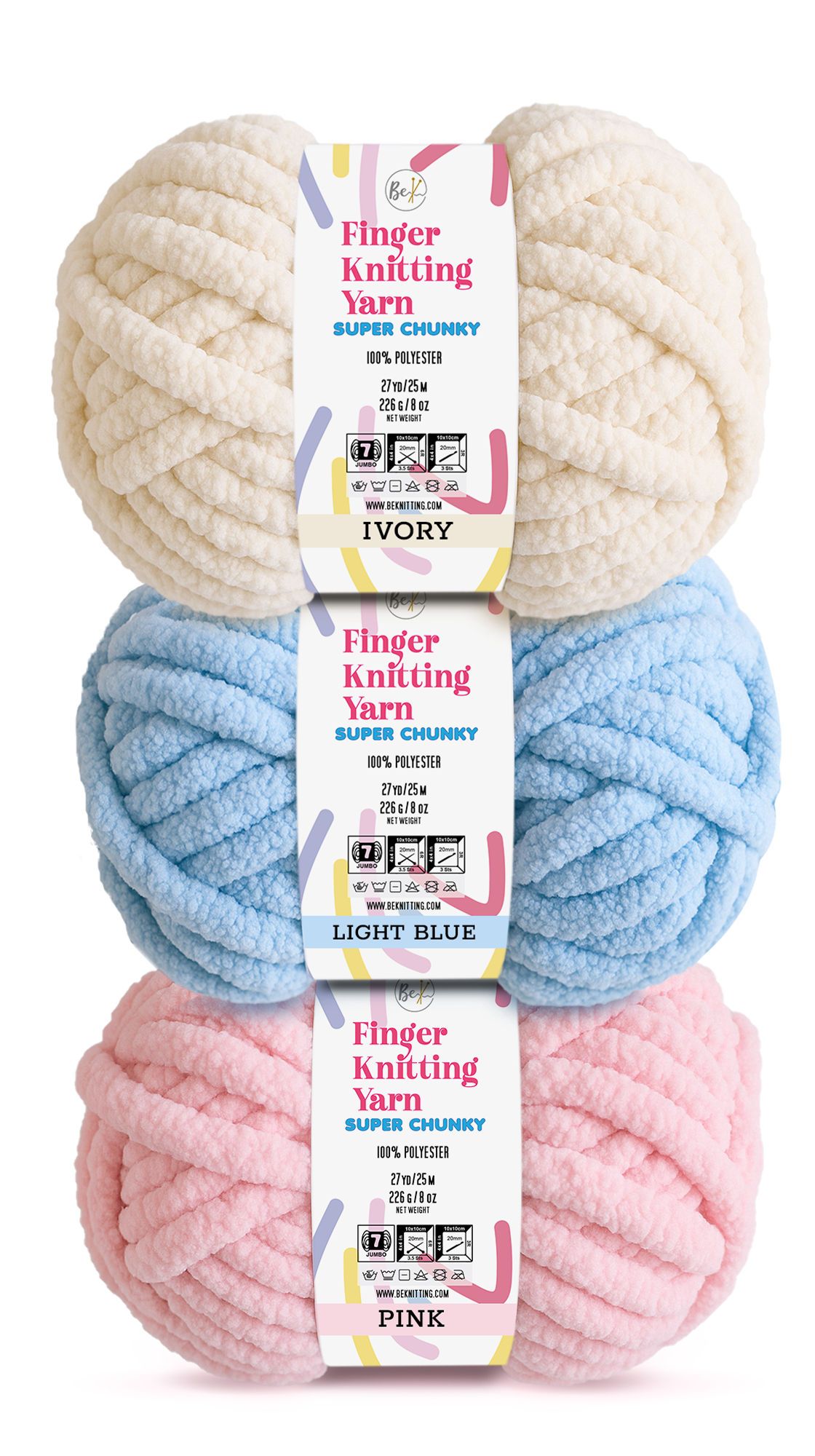
Looking for super bulky chenille yarn that works like a dream? Say less! BeKnitting’s Finger Knitting Yarn has everything you need to make your next cozy knitting or crochet project. It’s warm, cozy, and doesn’t shed!
Available on Amazon Now!
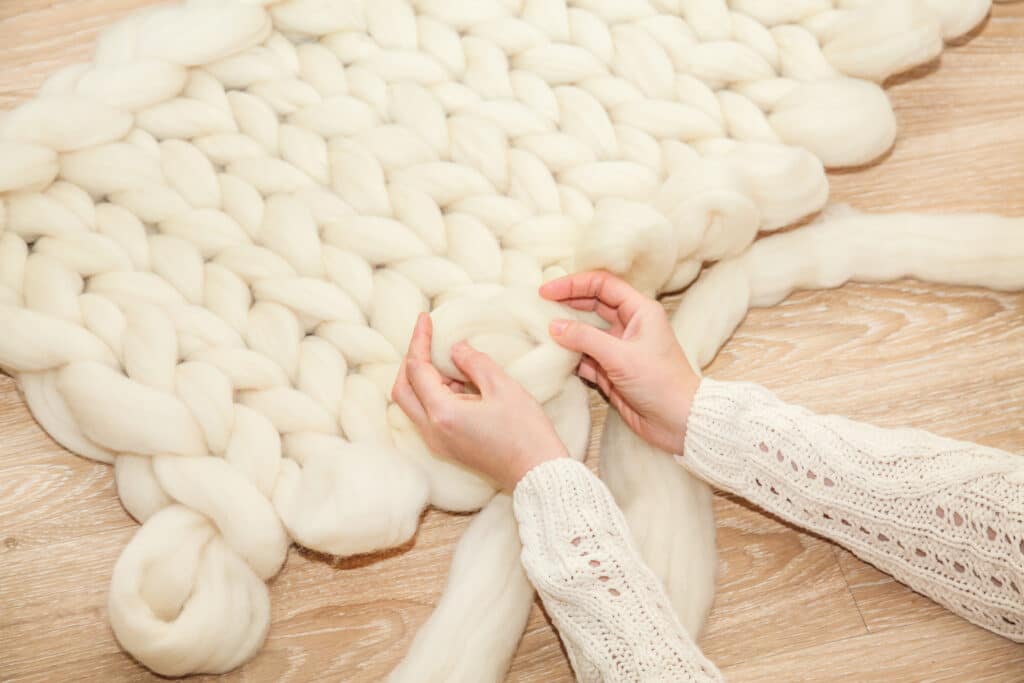
Arm knitting is just like regular knitting—except you’re going to be using your arms in place of needles!
If you’ve browsed Pinterest, you’ve probably seen pictures of people knitting super chunky blankets using giant knitting needles and super jumbo yarns. They look cool and all, but not everyone has the space to store these massive knitting needles!
Enter arm knitting! It’s much easier to use your arms to knit instead. Not only will you be saving a few dollars, but you’ll also get an awesome arm workout. If you decide to knit a chunky blanket or rug, your arms will probably look jacked by the time you finish!
Taking a break in between an arm knitting project is easier than you think! Here’s a quick tutorial by the Flax & Twine on how to stop in the middle of an arm knitting project: all you have to do is to take a stitch holder and carefully transfer the stitches there—or use a cardboard gift wrap roll.
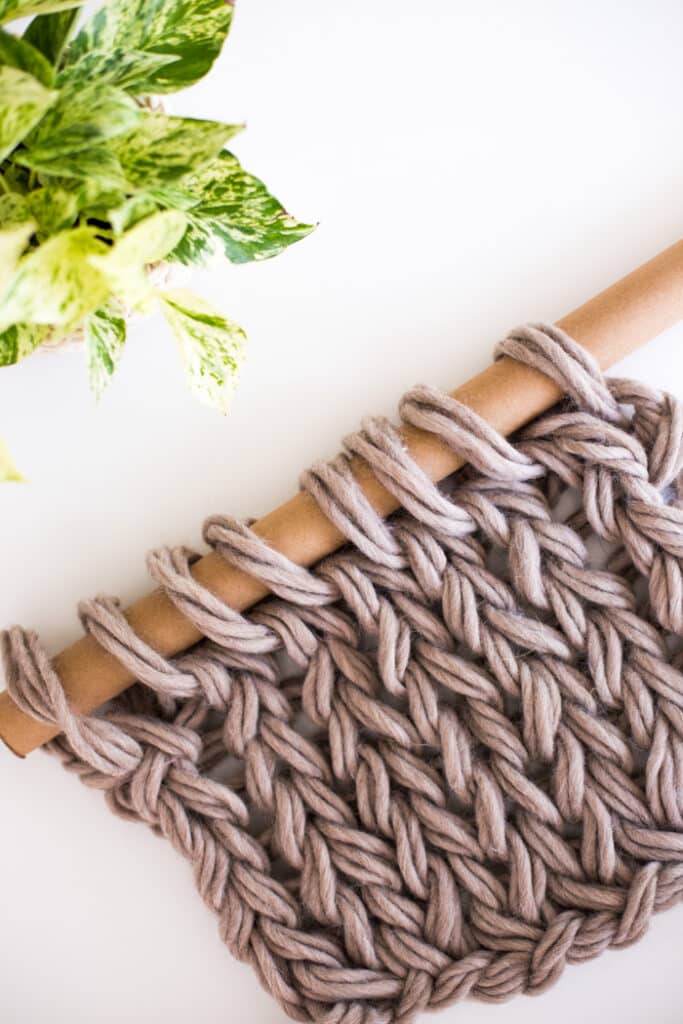
You can also use a long strand of scrap yarn. Just be sure to remember which arm you stopped on!
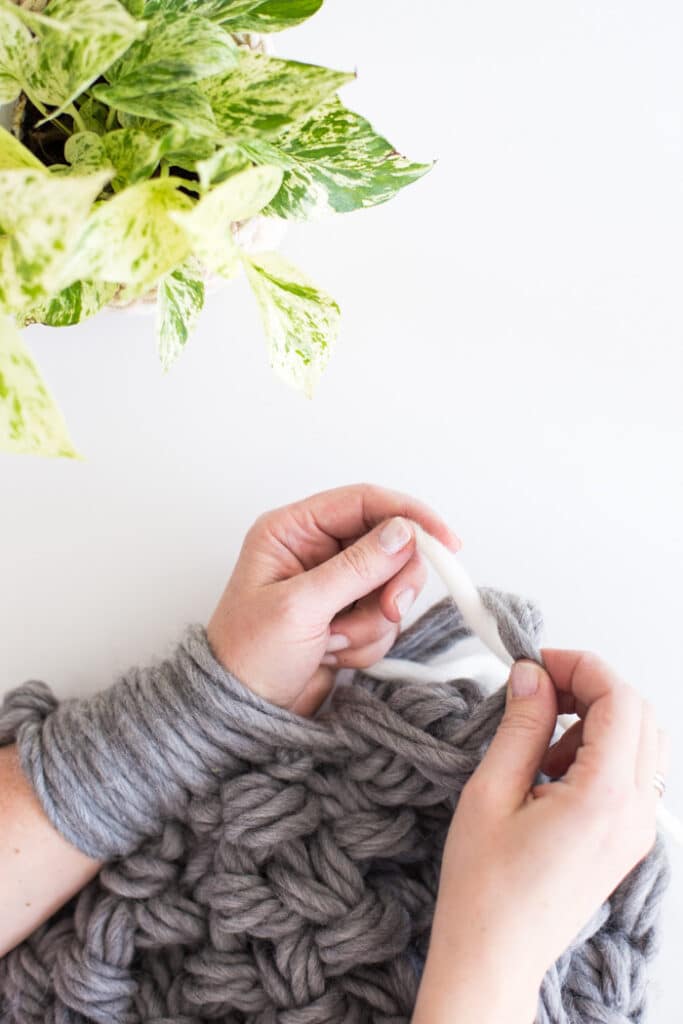
Feel free to take a peek at Flax & Twine‘s post about arm knitting after you read this blog! They have some useful tidbits that you might be able to use in your future projects.
Another key difference between arm knitting and traditional knitting is the yarn. Knitters using needles typically use thinner yarn that is less dense and a lot less bulky. Arm knitting means you can try using much larger and thicker yarns and that means even faster projects too!
The yarn material itself doesn’t matter that much, you can use acrylic yarns, wool, cotton, and even vegan yarn! We’ve collected a few of our favorite (and affordable affordable) brands you can find on Amazon:
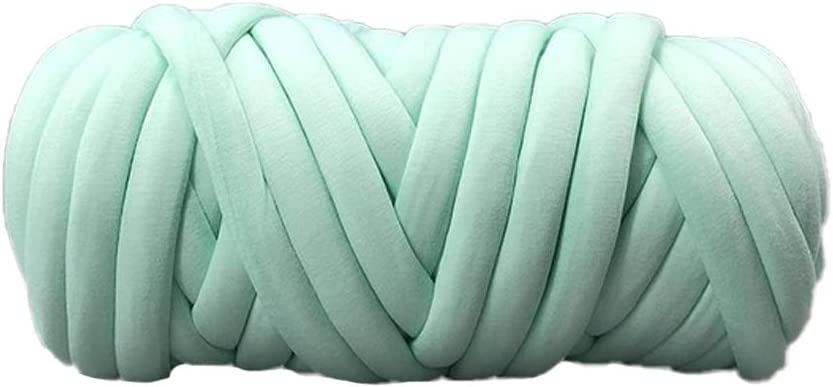
This giant ball of yarn is made of cotton and weighs around 250 grams. It’s machine-washable and pet-friendly too!
You can choose from three different weights: o.55LB/250g, 1.1LB/500g, and 2.2LB/1000g. This material is available in other colors and starts at around $15.99 per ball.
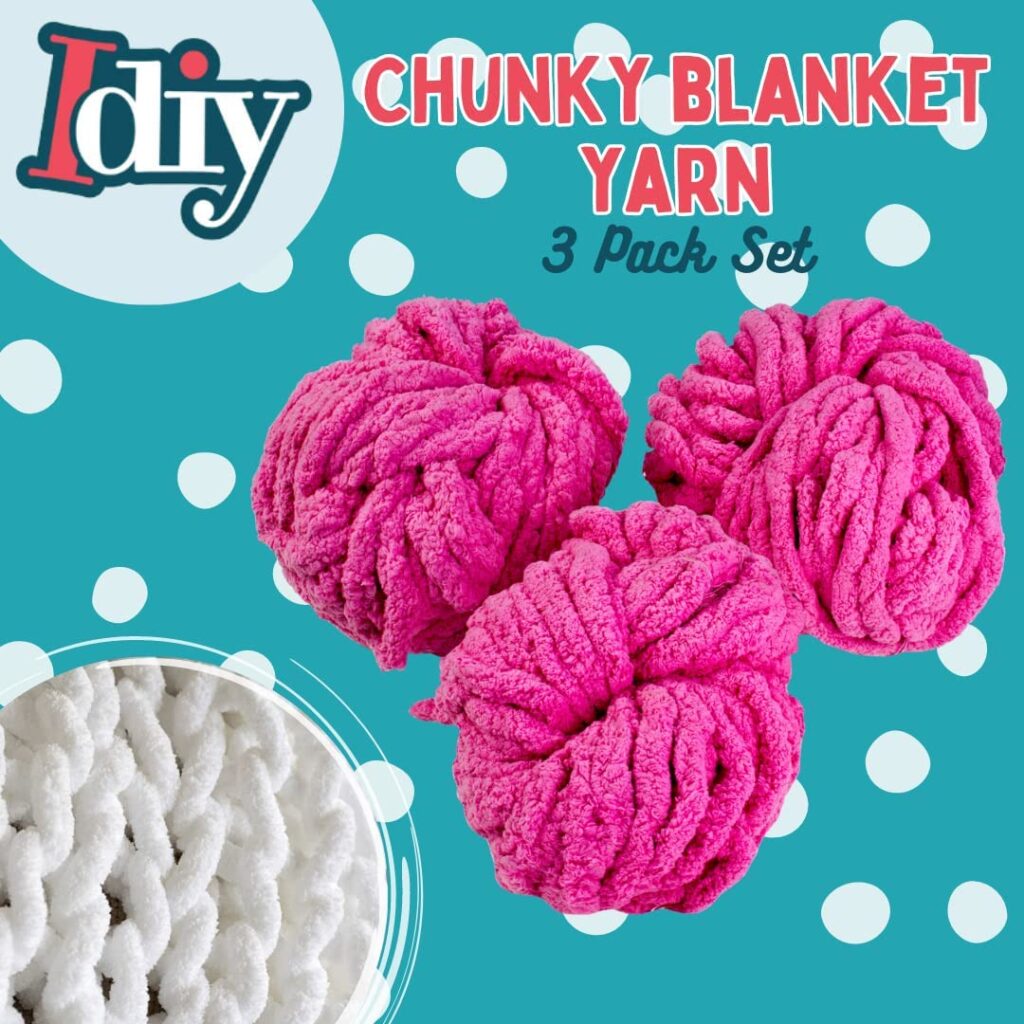
This chenille yarn type is perfect for rugs, cushions, and blankets.
It’s machine-washable and extremely lightweight!
SCS Direct has this material in a variety of different colors. You can purchase a pack of three (3) for less than $30.
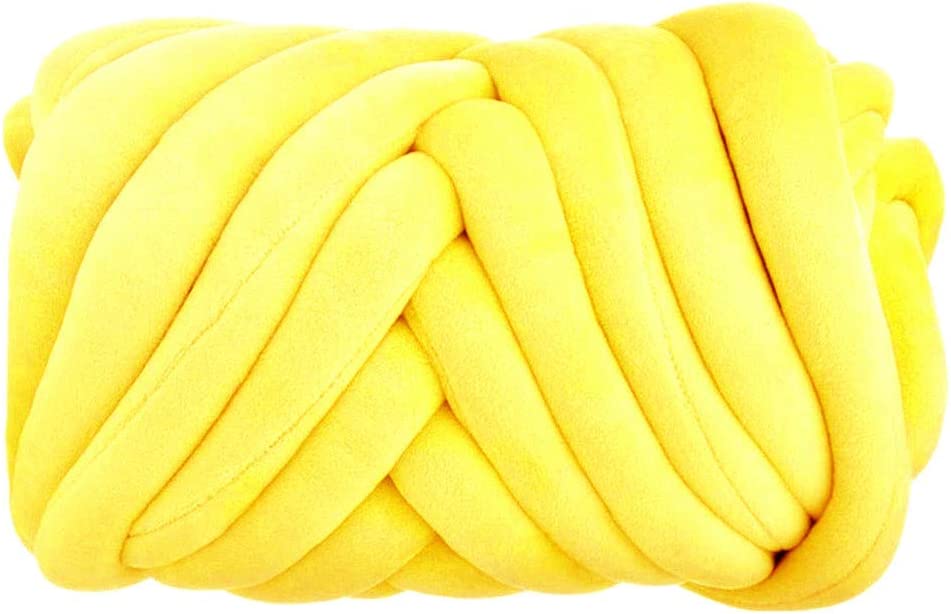
This is the more expensive option on this list.
This type of yarn is the perfect material for cozy blankets and throws. It is made with cotton fabric stuffed with fiberfill to make it extra chunky!
Zhengjun also has this in different colors. A 5LB/95-yard skein costs around $63.
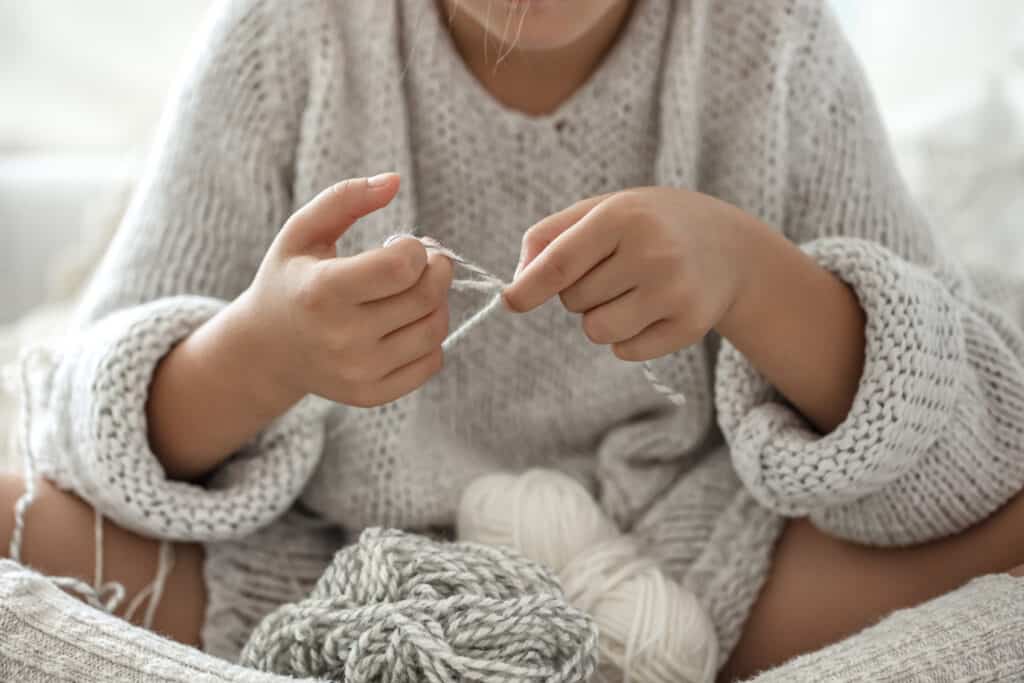
Just like arm knitting, finger knitting is another method of knitting where you chuck the needles and use your hands instead.
You can make hats, blankets, throws, rugs, and even bags using your fingers. It’s also one way to keep yourself occupied when you’re bored at home or on the road.
Want to make those chunky blankets and hats you see on Pinterest? Then finger knitting will be your best friend.
Starting a finger-knit project can be slightly different from traditional knitting, but it’s just as easy—even an 8-year-old can do it! In fact, this is a great way to teach young kids how to knit without the frustration of knitting needles.
If you’re a beginner, we suggest starting on a throw blanket. The stitches are simple and you can use this time to get a hang of finger knitting.
Stopping in the middle of a finger knitting project is very easy! Here’s a short snippet from The Spruce Craft‘s article on finger knitting: All you need is a long, thin object such as a pencil, crochet hook, or a spare knitting needle.
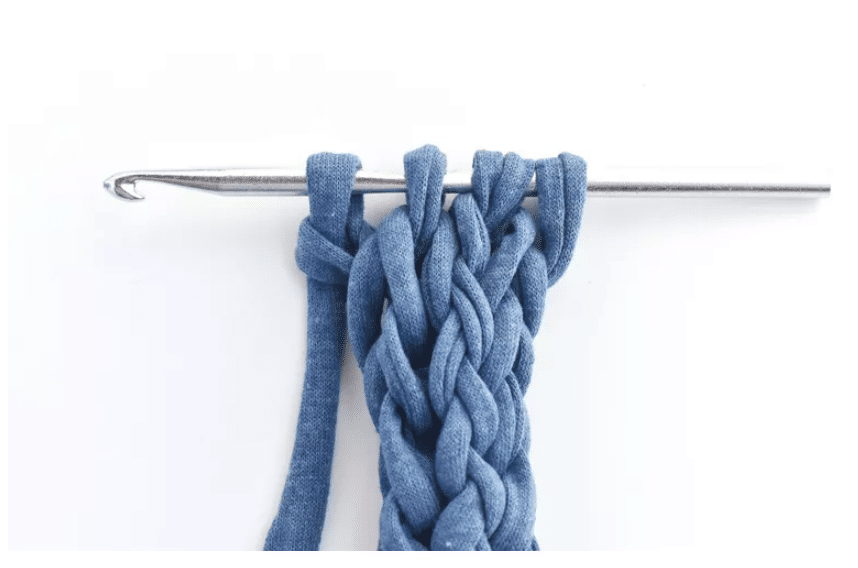
Simply slide the object through each loop, making sure that the loops are still facing the same direction—and voila!
The Spruce Crafts has a lot more useful tidbits about finger knitting, so make sure to head on there after reading this article!
Both finger knitting and arm knitting use chunkier yarn materials. But you won’t need those uber-chunky skeins we recommended above.
Here are some ideal finger-knitting yarns available to order on Amazon:
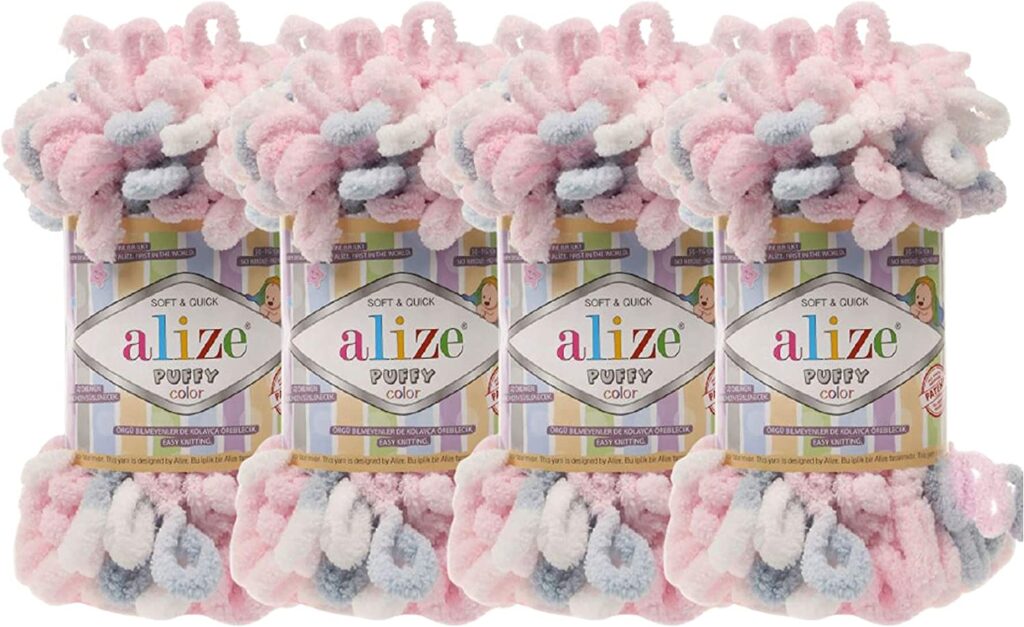
If you want a solid start at finger-knitting, these Alize loop yarns are the ones you want.
They already have loops, all you have to do is to pull the hoops through one another until you achieve the right length and look for your project.
Even complete beginners can create beautiful projects with these yarns. You can purchase these skeins for around $24.

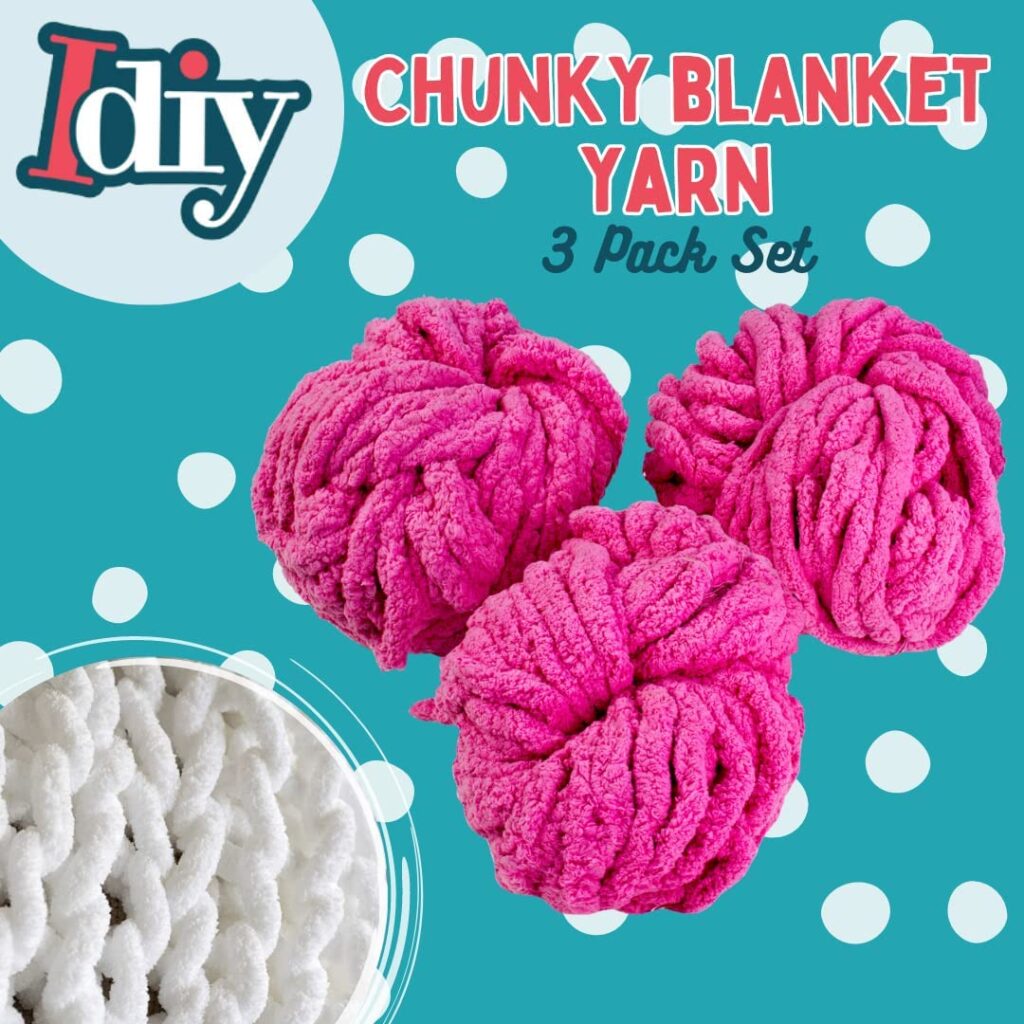
Perfect for cozy blankets, scarves, and throws, this pack is a great way to start your finger-knitting projects.
You can purchase these for around $30 for each batch of three (3).
Now that you know what types of yarn you can use for your arm knitting and finger knitting projects, let’s get into a couple of free patterns you should check out!
We want to keep this completely beginner-friendly so we’re only going to include free knitting patterns that make use of simple knitting terms, stitches, and materials.
Let’s get started!
There are a ton of free arm knitting patterns online so it’s quite easy to feel overwhelmed. We’ve chosen only the most beginner-friendly ones here!
We give full credit to the original designers and encourage you to visit the links to get a better look at their patterns.
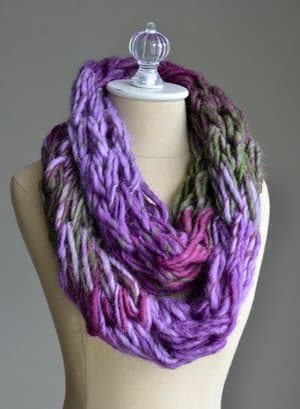
Whether you love color or prefer neutrals, you won’t go wrong with this arm knit cowl!
Thanks to the texture, it’s easy to add a personal touch to even monochromatic outfits.
Feel free to add as many colors as you want or stick with muted neutrals!
Yarn weight: (6 skeins) Chunky/Super Bulky/Super Chunky Yarn
Circumference: Approximately 66″ long.
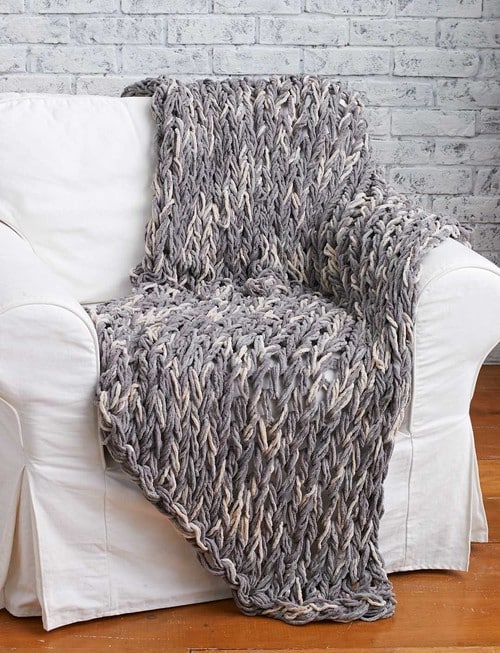
Blankets are really easy to knit.
Yes, you read that right! Blankets are really quite easy to knit—especially with your arms.
Don’t worry, you won’t need any fancy materials.
So why not give this chunky blanket a try?
Yarn weight: (6 skeins) Chunky/Super Bulky/Super Chunky Yarn
Dimensions: W 45″[114.5cm] x L 60″ [152.5 cm].
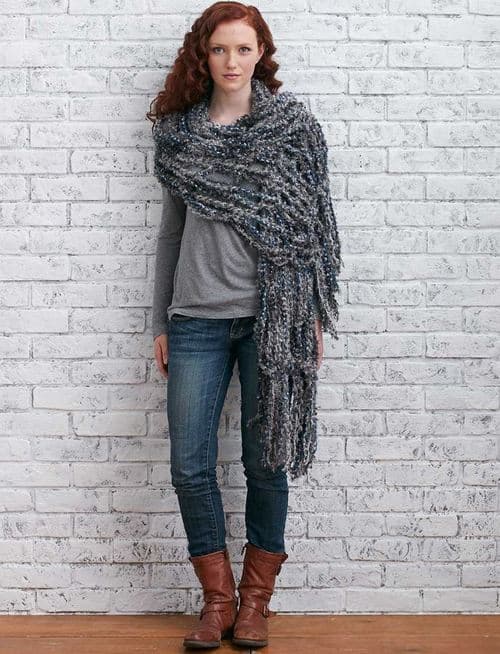
Who knew something so simple can add so much oomph! to one’s outfit?
This arm knit wrap is proof that you only need one thing to elevate your basics.
Yarn weight: (6 skeins) Chunky/Super Bulky/Super Chunky Yarn
Dimensions: W 18″ [45.5 cm] x L 72′ [183 cm].
Though easy and beginner friendly, having thousands of finger knitting patterns to choose from can quickly lead to information overload. You’ll never be able to start on a project that way!
Today we’re highlighting 3 of our favorite beginner-friendly finger knitting patterns. We give full credit to the original designers, be sure to visit their websites to check out other finger knitting patterns they may have for their readers!
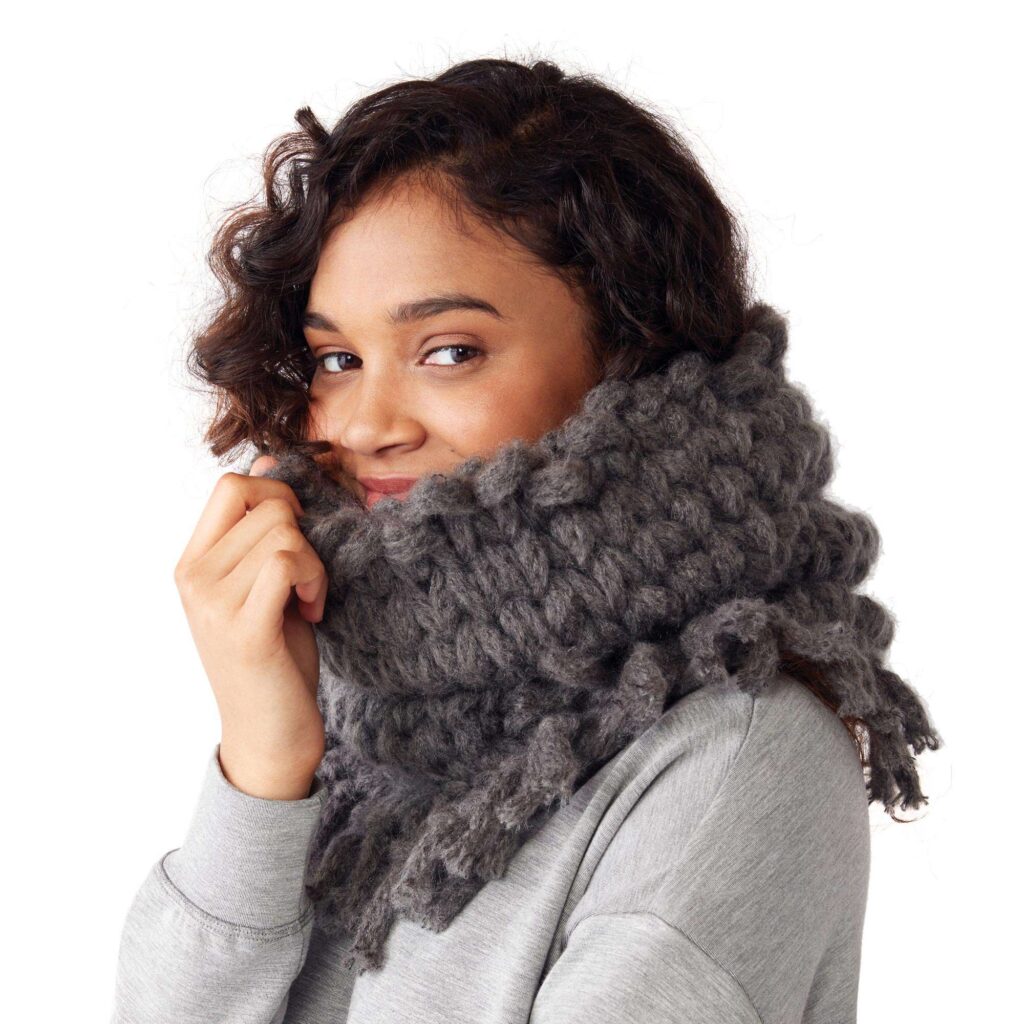
So you want to make a cowl, but you can’t find chunky knitting needles? No problem.
Just use your fingers!
Yarn weight: Chunky/Super Bulky/Super Chunky Yarn
Circumference: C 25″ [63.5 cm] x D 13″ [33 cm].

Finger knitting a whole blanket seems like an intermediate to expert-level task, but it’s a lot easier than you think!
Mix and match your favorite colors or stick to the basics.
Yarn weight: Chunky/Super Bulky/Super Chunky Yarn
Dimensions: 52″ x 52″ [132 cm square].

Knitting is an art form that anyone from any age group can enjoy. You don’t need any special tools to knit either! You can use your arms and your fingers to create amazing items to spruce up your home or make thoughtful gifts for your loved ones.
Arm knitting and finger knitting both make the hobby a lot more portable. Because you don’t need needles, you can easily make more space for your favorite yarn in your knitting backpack!
If you’re not quite ready to venture into finger knitting or arm knitting, there are still plenty of beautiful projects you can create using the traditional knitting needles.
Just have a quick look at our colorful library of knitting tips, tricks, and free patterns!


